The right marketing plan can keep your team aligned, accountable, and productive.
Sadly, you’d be surprised by the number of teams that neglect the planning process and don’t invest the time and attention it deserves.
But if you’re reading this, chances are you don’t want to be like those teams.
So, if you’re looking for a simple roadmap to developing a manageable marketing plan for your business, we’ve got your back.
We’ll show you what a marketing plan is, how to develop yours, and how to tap into automation to modernize your planning process.
What is a marketing plan?
A marketing plan is a document where you analyze the current situation of your market, define the main objectives of the campaign, and schedule the steps you’ll take to achieve such objectives.A typical marketing plan answers the following questions based on the 4 P’s of marketing:
- Product: what are we selling?
- Price: how much will it cost?
- Place: where will we be selling the product?
- Promotion: how will we sell it?
As markets evolved, though, entrepreneurs realized they needed to answer additional questions, including:
- People: who is the perfect buyer for this product?
- Process: what processes will be used?
- Personalization: how can we tailor our messaging to our ideal customer?
- Physical evidence: what design will be used to make the product more appealing?
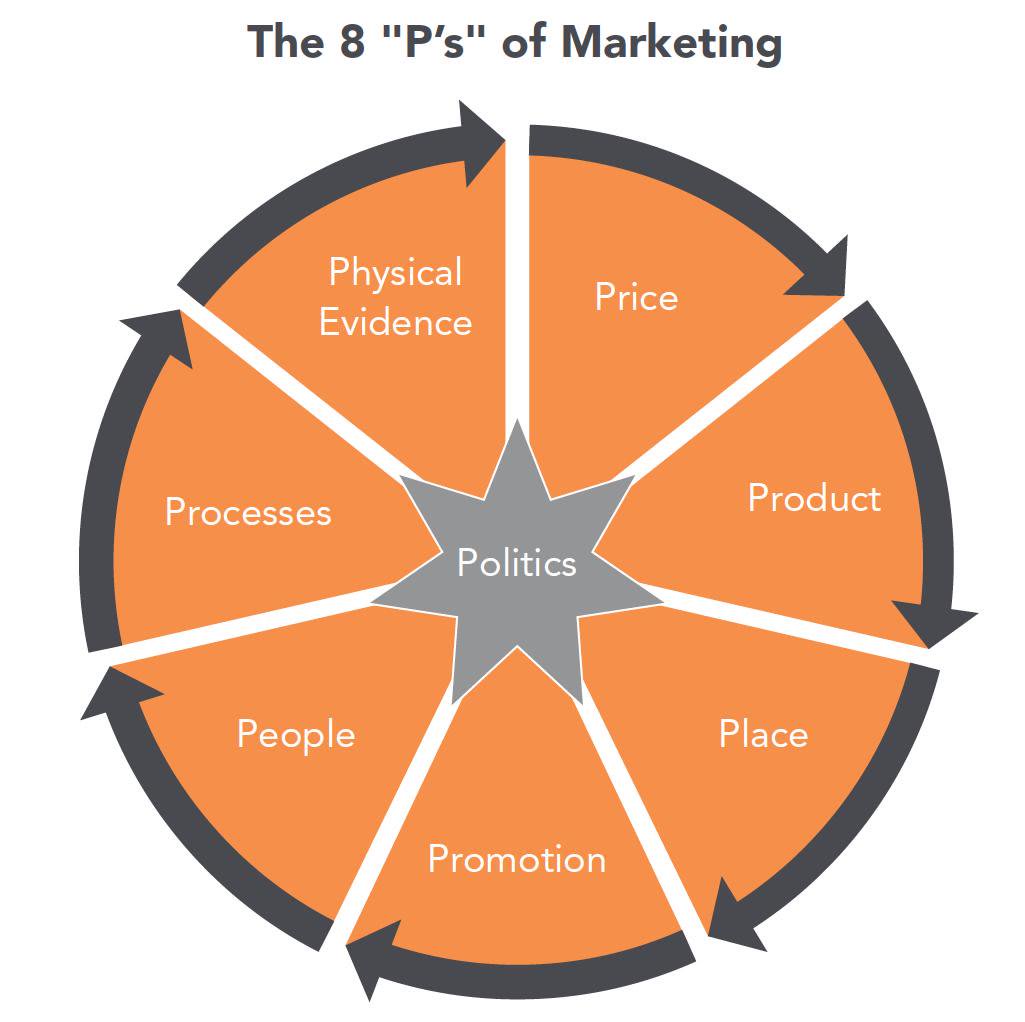
A well-structured marketing plan answers all these questions and serves as a guide for you and your stakeholders throughout the implementation phase.
Let’s imagine that you want to start a new barbershop in a small town near Los Angeles. You have 2 options:
- Collect the initial capital, launch your business, and pray it works
- Research the market, develop a strategic plan, and stick to it
Which option would give you the most chances of success?
The second one, of course.
By spotting potential gaps in the market and planning how you’ll fill them, you’re more likely to see good results.
For example, you might discover that all the current barbershops in that town are pretty generic, and the experience they offer isn’t that great.
Based on your findings, you could pay special attention to offering a different experience, which might become your competitive advantage.
On the other hand, you might find the market is pretty saturated, and you would have a hard time trying to position your business in such a small town.
That’s why a marketing plan is so crucial.
Now, before we get into the actual process of creating a marketing plan, let’s answer a major question.
Why do you need to continually update your marketing plan?
Even though marketing is a continuous process in your organization, you should approach it like a project — something with a specific beginning and end, as well as clear goals.
You see, markets evolve rapidly, and each change brings different challenges. When you treat marketing as a project instead of a fixed process, you can adapt to these constant changes faster and develop smarter solutions.
Planning is an essential part of the project management process, and every marketing initiative you implement should be preceded by well-thought-out planning and research.
And it’s not just us saying that.
Only 5 out of 10 businesses survive their 5th year.
And a recent survey revealed that 15% of business owners say marketing is one of their biggest challenges.
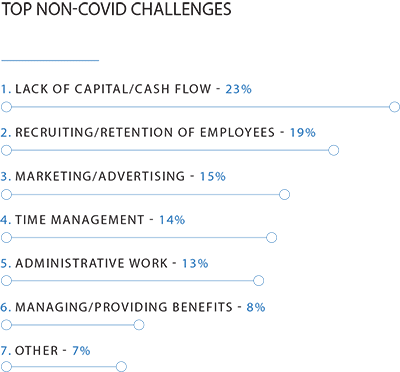
A robust marketing plan — developed to meet the current business environment — can go a long way to help.
When you have a clear understanding of your market and design a solid roadmap of action that keeps your team aligned, it’s more likely that you overcome the challenges your business faces.
And, by taking an iterative approach to your planning process, you can adapt your plan accordingly. This guidance you get along the way is one of the main benefits of a marketing plan.
Other benefits may include:
- Organization-wide alignment: the right marketing plan can help you get everyone on the same page.
- Align the initiatives with the core mission: ensure everything you do actually impacts your bottom line.
- Analyze opportunities and threats: exploit opportunities and create contingency plans against threats.
- Measure progress more accurately: understand whether you’re on track or falling behind schedule.
What is the difference between a marketing strategy and a marketing plan?
While both strategies and plans refer to the conscious decision of achieving an end result, they’re slightly different concepts. The main difference between them lies in the role each of them plays in the marketing process.
A marketing strategy is the overall approach you’ll take to achieve a specific marketing goal, whereas a marketing plan is a document that supports that strategy with a clear roadmap of action.
Strategies are dynamic in nature and typically represent a long-term effort. A plan, on the other hand, is often short or medium-term focused.
In essence, strategy comes before planning.
Quoting Richard Rumelt, author of Good Strategy, Bad Strategy:
“The most basic idea of strategy is the application of strength against weakness. Or if you prefer, strength applied to the most promising opportunity [..] A good strategy doesn’t just draw on existing strength; it creates strength.”
Following the barbershop example, your strategy might be to win some market share by targeting a smaller group of customers (e.g., men over 40 that want to look younger).
Your plan, though, would outline the specific steps you’ll take to implement the strategy. For instance:
- Partner with local bars where your target audience commonly hangs out
- Create an appealing design that makes your barbershop stand out
- Give away free haircuts
- Create a blog to share tips about masculinity
Of course, this is a rough example of what you’d include in a marketing plan, but it exemplifies the difference between a plan and a strategy.
How to develop a successful marketing plan
Now that you understand the theory behind marketing plans, let’s step into the practical process to develop yours.
The first thing you need to understand is the different elements that make up a marketing plan, which are:
- Executive summary: an introductory section where you explain what the plan is all about.
- Goals: a section that describes exactly what you’re trying to achieve.
- Market research: this section answers the question, “Is the plan actually feasible?”
- Description of customer profiles: a brief description of the target audience.
- High-level strategies and tactics: a description of the steps you’ll take to achieve your goals.
Other less common yet highly-recommended elements include:
- Situational analysis: an exploration of opportunities and threats in the market.
- Budget: a breakdown of the costs involved in the process.
- Schedule: a description of the sequential progress of the project.
- Responsibilities: a definition of who’ll be doing what, and when.
That said, let’s break down each of these elements:
1. Executive summary
As the name suggests, the executive summary should cover just the essentials about your plan and must address the main concerns the management team may have. For example:
- What’s the main marketing goal?
- How will you achieve the goal?
- Why are you qualified to execute the plan?
- What can we expect?
Keep in mind that the executive summary must be concise and to the point. You’ll have extra space to share the details in the other sections.
2. Situation analysis
As we discussed earlier, one of the main objectives of a marketing plan is to figure out whether the project is actually feasible. To do it, you must perform market research and include it in your plan.
A SWOT analysis might be helpful at this stage.
SWOT stands for Strengths, Weaknesses, Opportunities, and Threats. It’s an approach that helps you turn your data into actionable information about your market and competitors.
With monday.com’s Kanban view, implementing this analysis is pretty straightforward.

Start by creating 4 item groups — 1 for each element in the SWOT process. Then, go back to your research and try to incorporate your data into one of the groups accordingly. You can add new items to a group by clicking the “+Add item” option.
To speed up the process, we suggest you host a meeting with your team to brainstorm and collaborate to fill out your SWOT.
For example, your SWOT may look something like this:
Strengths
- We raised $30M in capital last year
- We have the most competitive team in the industry
Weaknesses
- We don’t have the most convenient location
- We’re relatively new in the market, and people don’t trust us yet
Opportunities
- The market has grown 200% over the past year
- 30% of our target market feels unsatisfied with the options available
- 35% of the market is already looking for alternatives
Threats
- 5 new competitors have entered the market
- Advertising costs are growing exponentially
- COVID-19 pandemic
By breaking down your strengths and weaknesses, as well as the opportunities and threats in your market, you’ll have a more solid understanding of the current state of your market.
Other things you may want to consider in this phase include:
- Customer profiles: develop a clear description of each buyer persona in your audience.
- Competitive analysis: analyze your competitor’s strategy to find potential gaps you can fill.
3. Set clear goals
No plan can be successful without clear and well-defined goals and KPIs.
So, once you have your executive summary and market analysis in place, it’s time to describe what your main goals are and how you’ll measure progress.
At this stage, you can implement the SMART approach to goal-setting.
In essence, SMART stands for Specific, Measurable, Attainable, Relevant, and Time-based. This framework will help you develop more solid goals for your plan.
For instance, instead of stating, “Our goal is to increase sales,” you should write something along the lines of “Our goal is to increase product sales by 30% within the next 3 months.”
Or instead of setting a goal like “Reduce advertising costs,” you could write, “Reduce average CPA (Cost Per Acquisition) from $10 to $5 by next quarter.”
Using the SMART approach will not only help you get a clearer picture of what you’re trying to achieve, but will also keep you accountable along the way.
Now, setting goals is important, but measuring those goals is even more crucial. Otherwise, you can’t possibly know whether your initiatives are working. That’s why you need a modern project management system that helps you keep track of everything.
For example, with monday.com, you can set up advanced reporting dashboards and make them accessible to your entire team to ensure alignment.
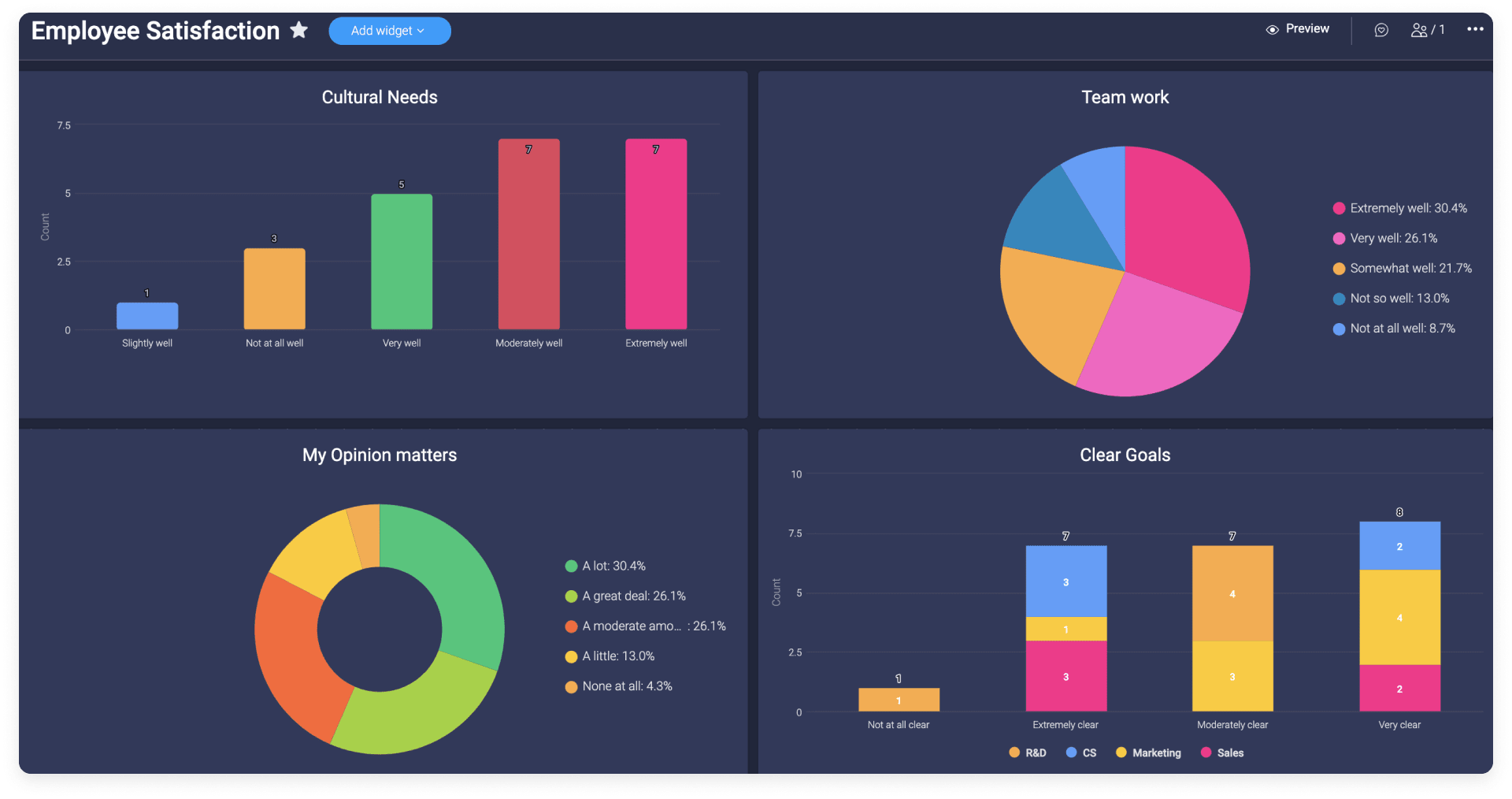
This way, everyone in your team will be aware of progress, and you’ll be able to adjust your plans accordingly.
4. Describe your core initiatives
Goals without action are worthless, right?
Your plan shouldn’t only describe what you want to achieve, but also how you’ll achieve it.
In other words, your marketing plan should include detailed activities you’ll implement to achieve the overall marketing objective.
For example:
- Launch a WordPress blog
- Find 30 high-intent keywords with low competition
- Create 1 blog post per week targeting one of the main keywords
- Partner with influencers to promote our content
- Include relevant CTAs throughout the content
In essence, you should clearly describe what you’ll do to go from point A to point B. This will add credibility to your plan, but also keep your team focused on the activities that will move the needle.
5. Build your team and assign responsibilities
Now that you’ve defined your goals and activities, the question becomes: who will be responsible for each marketing activity?
At this stage, you should describe who’ll be doing what and how your team will operate.
Also, you should include the process you’ll use to manage the team and measure performance along the way.
For instance, with monday.com, you have access to powerful team management features to keep a close eye on your team, assign tasks to individual members, and measure how they’re spending time and resources.
Besides, with our marketing team planning template, you can manage your high-level initiatives and ongoing tasks in one place.

This template also helps you track progress on specific tasks and make sure everyone’s meeting deadlines.
By including this level of granularity in your document, it’ll be easier for everyone — team members and stakeholders — to understand why the plan is solid.
6. Define your marketing budget
Not all marketing plans include budgets, but we highly recommend you take the time to include them, as it will make the plan more relevant and descriptive for your team and will help management understand what your marketing effort will take in monetary terms.
Start by describing the overall cost of the entire marketing campaign. Then, break down the costs by initiative.
It’s also crucial that you state how you’ll track budgets and costs along the way.
For instance, with our fully customizable high-level marketing budget template, you can have a clearer understanding of your budget breakdown and make sure nothing slips through the cracks.
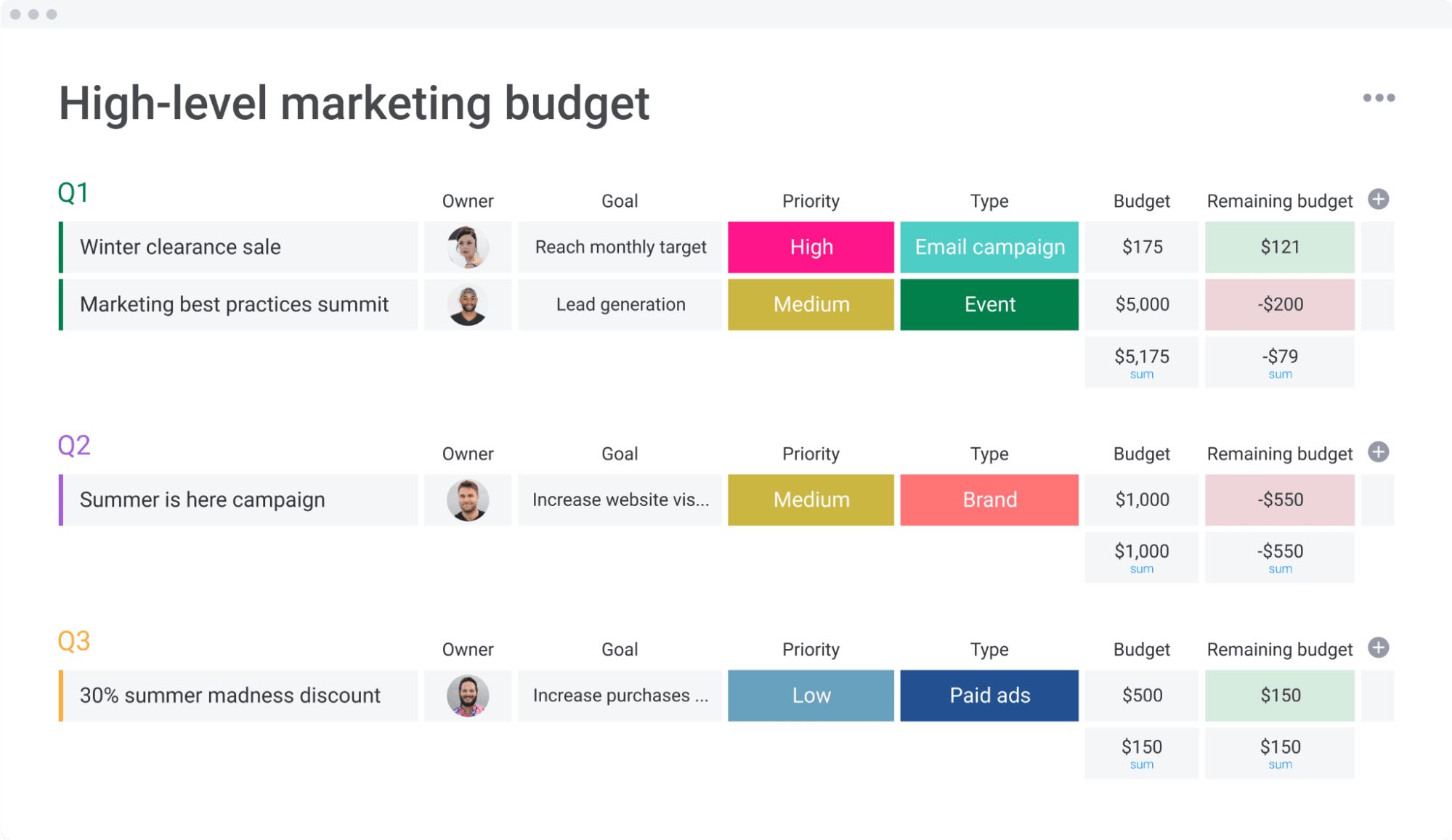
This template helps you track costs, allocate budgets, and visualize how your money is being spent throughout the campaign.
In the marketing plan document, you could explain how you’ll use this template and include relevant screenshots, so your team understands the general process.
7. Design your schedule
Once you have defined a clear business goal and the steps you’ll take to achieve them, it’s time to create a schedule. When will you be doing each marketing activity?
This will keep your team aligned on what they should be doing, and when. It’ll also help your team understand whether you’re on track or falling behind.
We suggest you approach scheduling in 2 ways:
- Design a timeline or Gantt chart to schedule your initiatives
- Use a calendar on top of the initial timeline to visualize the schedule from a different perspective
Fortunately, with monday.com, you don’t have to create both separately. With our multiple-view functionality, you can shift from Timeline to Gantt and even Calendar in just a couple of clicks.
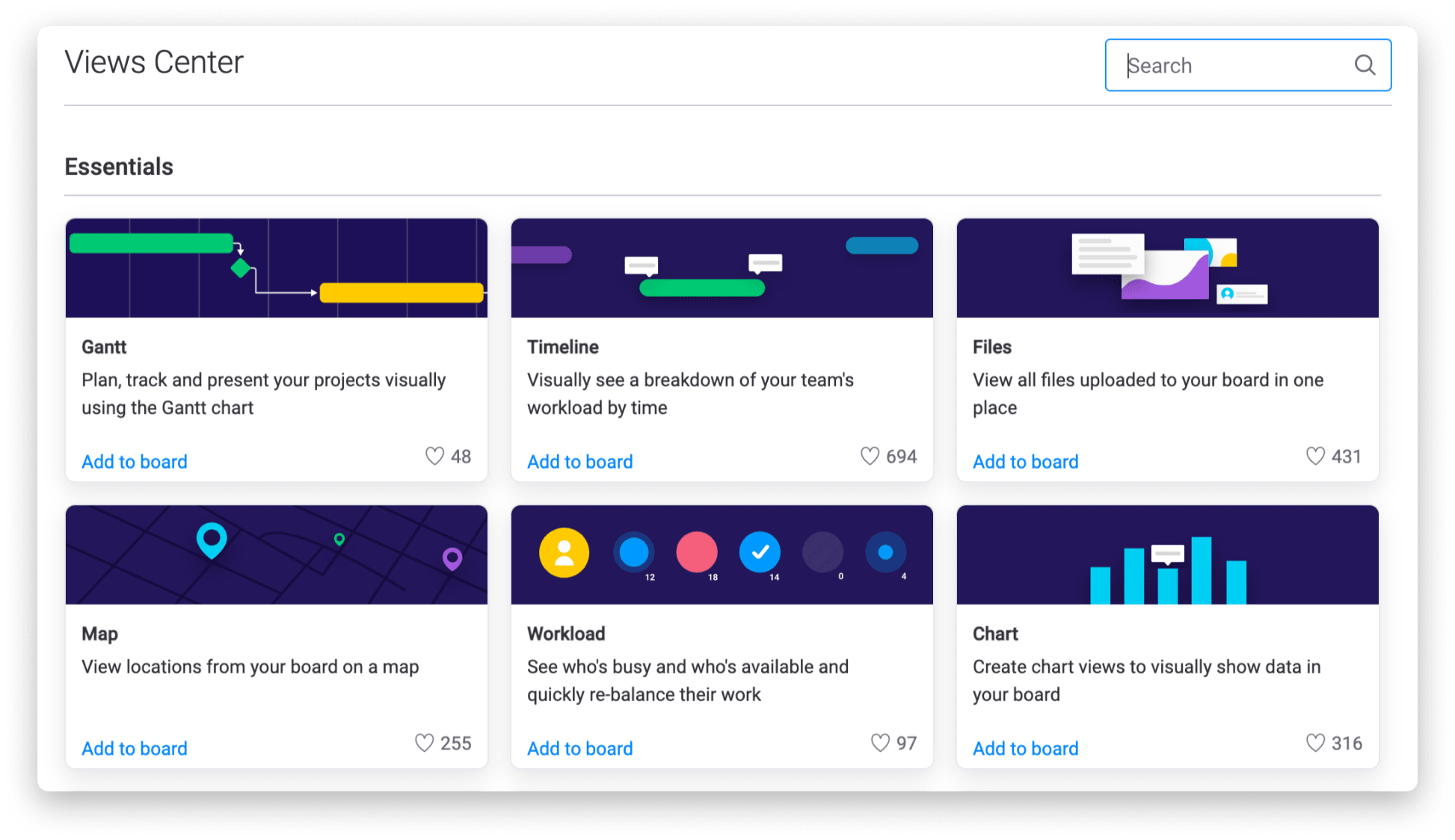
This gives you the flexibility you need to manage your schedule more efficiently.
To learn more about timelines and Gantt charts, we suggest you read the following guides from our blog:
How to modernize your marketing planning process with monday.com
A few decades ago, marketing teams relied on spreadsheets or pen and paper to develop their plans. Fortunately, now the process is way easier.
With platforms like monday.com, you can streamline your planning process and work much more efficiently.
To see for yourself, let’s quickly cover what we offer and how we might help.
Let’s start with a basic question:
What is monday.com?
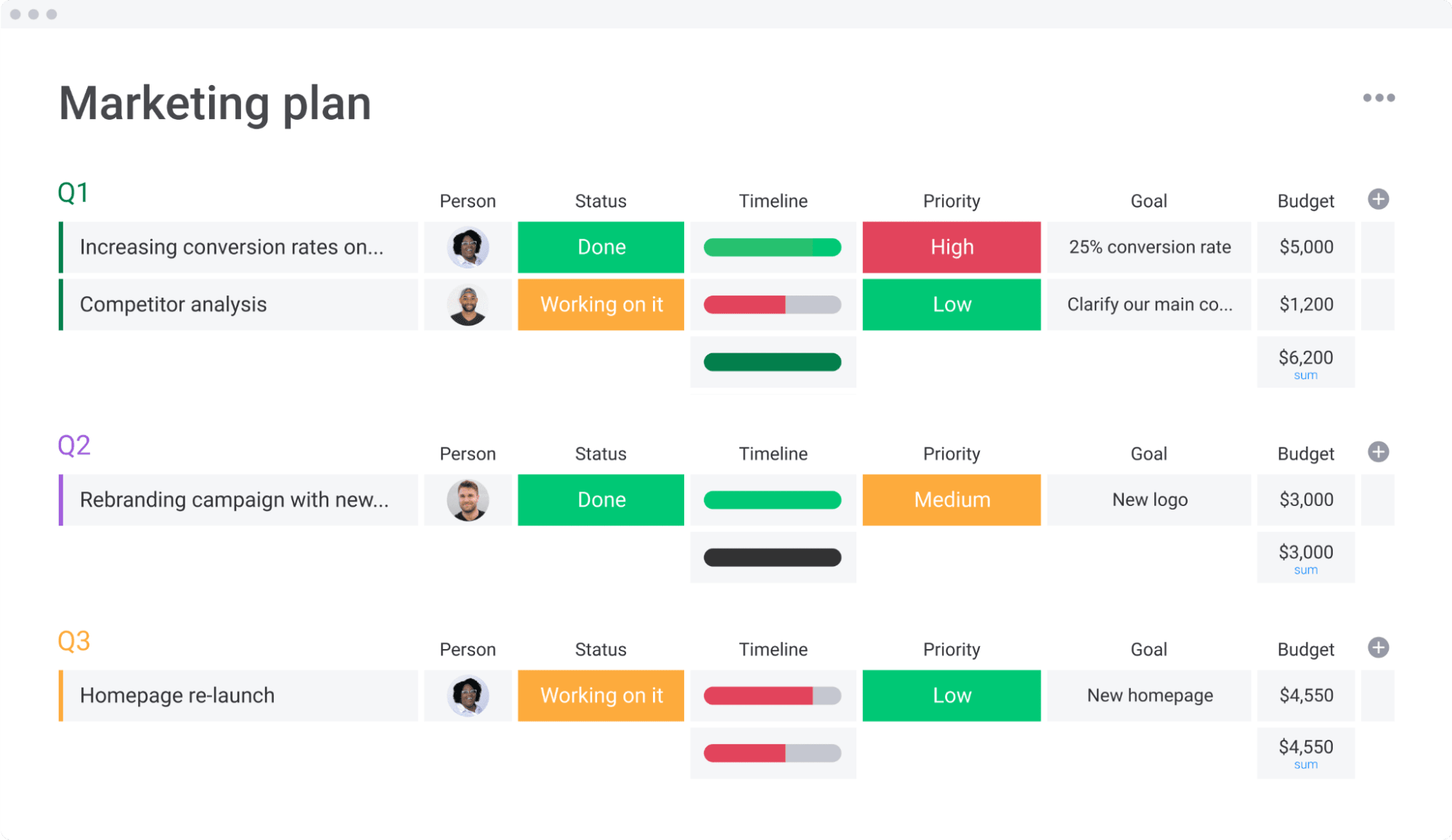
monday.com is a powerful Work Operating System (Work OS). That is, a platform where you can build digital workspaces that meet your exact business needs.
Currently, more than 100,000 teams — including Coca-Cola, Universal Studios, and NBC — trust monday.com to manage their teams and work more efficiently.
Some organizations have used our platform to become more profitable — like Entrepreneur Magazine, which increased digital sales by 23%. Or Falkbuilt, which went from 0 to $1.3 million in under a year.
Others have experienced exponential growth in their team productivity — like M Booth, which increased deliverables by 49% thanks to monday.com.
And some others have used monday.com to build more solid teams — like Genpact and Software AG, which increased cross-team collaboration by 40% and 71%, respectively.
Whether you want to increase sales, work more productively, or build more collaborative teams, monday.com provides you with all the technology you need to actually do it.
But you’re here to learn more about marketing planning, right?
Why monday.com is a great marketing platform?
In terms of marketing, some of our main features include:
- Selling point: seamlessly connect an optimized sales experience with account and project management.
- Automations: get access to more than 250,000 automation recipes to streamline any type of workflow.
- Activity recording: visualize every touchpoint you’ve had with a specific client and improve your customer relationships.
- Team management: assign tasks, measure progress, and manage your entire team under one roof.
- Integrations: integrate 40+ of your favorite marketing management tools and apps in just a couple of clicks.
- Data visualizations: visualize your board from multiple perspectives, including Kanban, Timeline, Calendar, Map, Gantt, Workload, and more.
- Reporting: get access to customizable reporting dashboards to make sense of your data and make better (and smarter) decisions.
To get a more thorough understanding of everything you can do with our platform, please watch this short video overview:
Marketing templates
From the start, you get access to over 200+ fully customizable templates for different use cases and industries, including marketing.
Some of our most relevant templates include:
- Marketing plan template: plan and organize all your marketing initiatives in collaboration with your marketing team.
- Content calendar template: plan, organize, and coordinate all your content initiatives in one place.
- Social media planner: manage your social media activities and organize your upcoming content in one visual workspace.
- Event planning template: plan any type of marketing event and make sure you’re meeting deadlines.
- Video production management template: plan and manage your video production workflow in a visual way.
- Contact management template: manage all your contact information and create enhanced customer profiles.
- CRM template: manage every customer interaction in a single place and improve your bottom line.
All these templates will help you speed up the marketing planning process and showcase specific ways you’ll handle each process.
A strong marketing plan supports business success
So, what’s the key to building a successful marketing plan?
Simply put:
- Identifying clear and measurable goals
- Understanding who your ideal customer is
- Breaking down the plan into small, actionable steps
- Measuring constantly and iterating appropriately
By following the roadmap we outlined today, you’ll develop a more solid plan for your business.
And if you’re looking for a platform that makes the process easier, then monday.com might be right for you.
To start, why don’t you try our customizable marketing plan template? It’s the best way to start off on the right foot.

